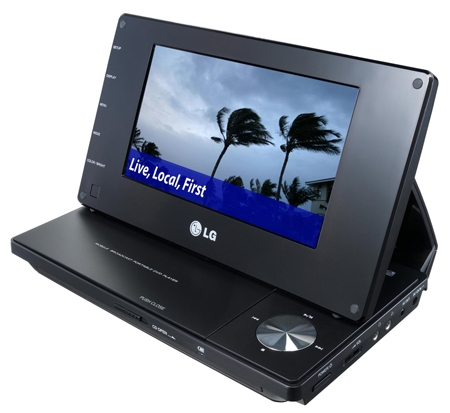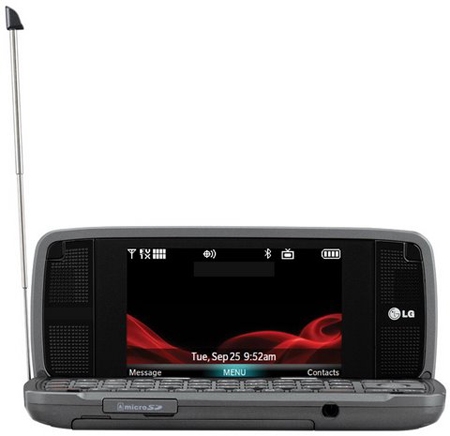Exclusive First Look: Mobile DTV Page 2
Get Your Motor Runnin'

After hearing so many promises about MDTV's robust reception, I was eager to try it for myself. Fortunately, one of the first stations to add MDTV is KVCW in Las Vegas, which is only a few hours' drive from my home. LG was kind enough to lend me hand-built prototypes of its upcoming DP570MH portable DVD player and KB770 cellphone, both of which have MDTV capability. Each product has a super-slim pullout antenna that can be extended for better reception. Neither picks up standard DTV broadcasts, only MDTV.
It quickly became obvious that MDTV broadcasting is still in an experimental phase. Although Aitken had promised that KVCW would be transmitting MDTV, I got no signal on the first try. Fortunately, he was able to summon a station engineer, who drove to the station from home to plug in some cables and get MDTV going for me. With my car parked on the outskirts of Vegas and the DVD player and the cellphone sitting on my passenger seat, I activated both sets' channel-scan functions and picked up KVCW's two MDTV channels: the CW at 33-1 and the Qubo kid's channel at 33-2. To see how a regular DTV signal would fare in a mobile environment, I also brought along a Digital Prism ATSC-710 7-inch portable DTV set, tuned to the standard DTV versions of 33-1 and 33-2.
In my parked car, all three sets delivered a stable, glitch-free, noise-free picture. The image quality of the MDTV signal looked fantastic on the 3-inch screen of the cellphone; I'd compare it to what you get when you watch video downloaded from iTunes on an iPhone. The DVD player's 7-inch screen revealed some flaws, though. The image had a pixelated look and showed momentary blockiness on some fast-moving scenes. I knew the 416 x 240-pixel resolution of the signal couldn't alone account for the artifacts, because the DVD player's 480 x 234-rez screen doesn't look pixelated when playing DVDs. Aitken later told me the pixelation was probably the result of the rather outdated video encoders that KVCW uses for its existing DTV feeds; according to the Sinclair rep, the inefficiency of these encoders leaves little bandwidth for the MDTV feeds.
Once I started driving, MDTV proved itself within the first 100 yards. Although I couldn't watch the TVs while I was driving, I could see out of the corner of my eye that the Digital Prism TV's picture immediately began stuttering and filling with green and purple splotches while the images on the DVD player and the cellphone stayed solid. Occasionally, one or the other would freeze up for a split-second or spit out a little audio glitch, but the flaws were far less severe and fewer in number than I saw with the DTV set - or than I would have encountered with my old analog Walkman, for that matter. Only when a large truck pulled up beside me, blocking the path between the MDTV receivers and the broadcasting antenna, did I lose reception.
MDTV was designed for reception at vehicle speeds up to 150 miles per hour, a claim I won't be able to verify until they build that long-promised bullet train between Disneyland and Las Vegas. But at 80 mph, the fastest speed I could wring from my Honda Element, the MDTV receivers worked as well as they did when I was parked. Both kept working until I entered Red Rock Canyon, about 15 miles west of the Las Vegas strip. The low mountains on the east side of the canyon proved too much for the MDTV signal, although both receivers worked fine until I got right to the canyon mouth.

Although the DVD player and the cellphone were both fun to use, my brief experience with them left me with the strong impression that cellphones are the killer app for MDTV. Watching the clear, colorful images of Qubo's Jane and the Dragon on the little cellphone was a total kick. With a few more channels to choose from, I'd have something better to do in the airport than play yet another game of Bejeweled. I'd have something more compelling to watch on Los Angeles's Orange Line bus than the canned videos they play on the LCD monitors. And I'd have something more entertaining to do while waiting in the doctor's office than read year-old issues of Esquire. The future of mobile TV looks solid - and my dear old Watchman can rest in peace.





























































